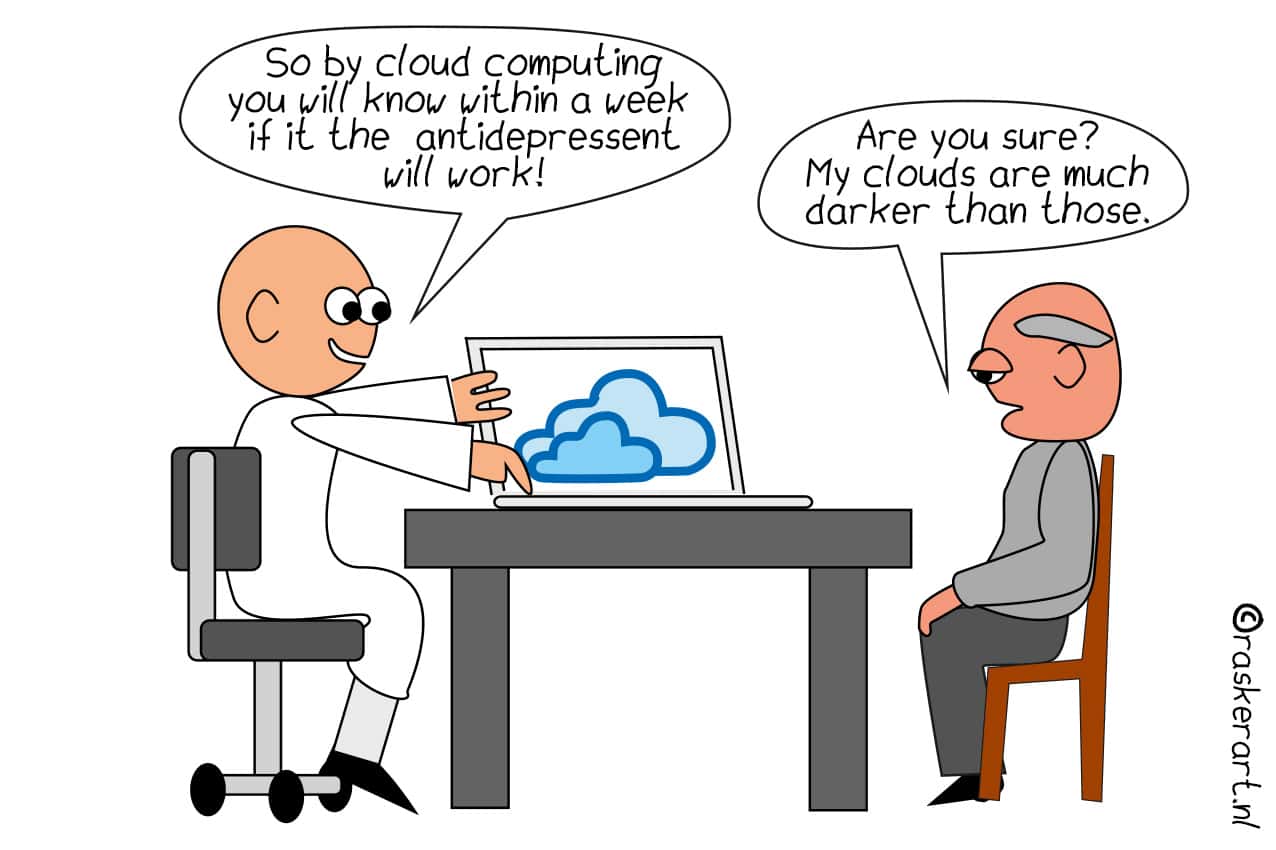
In the run-up to the discussions at the Catshuis (the Dutch Prime Minister’s official residence) on Sunday, outgoing Finance Minister Wopke Hoekstra was able to hand out a wee gift last Friday. After weeks of tremendous stress due to home education, parents will finally be relieved of their leaden burden: primary school children will be allowed to go back to school again, something that parents were supposedly ‘eagerly’ looking forward to.
According to Education Minister Slob, studies have shown that “…children tend to contribute significantly less to the spread of the virus anyway, and this also applies to the British variant.” However, the advisory from the Outbreak Management Team (OMT), which the government says it is basing its policy on, states that infection with the new UK variant may lead to an increased spread of the virus through children, but that there is no evidence that children play the same role as they do with influenza. Consequently, transmission through children is bound to happen, although kids are not considered by the OMT to be the major drivers of transmission.
98e OMT Advisory
The OMT leaves no room for misunderstanding as far as the epidemiological situation in the Netherlands is concerned: “The most favorable prognosis involves a situation in which the measures that are currently in place are continued. With this gloomy prognosis in mind, taking into account the concerns surrounding the feasibility of rapid vaccination and uncertainties regarding the effects of the current stricter lockdown – particularly in terms of the spread of the VOC 202112/01 variant – the situation is precarious and the circumstances are not favorable as a starting point for easing any restrictions.”
A number of OMT members deem the risks at this time to be so great that they are unwilling to issue a positive advisory on any relaxation of measures. “They would prefer to follow the situation for a few more weeks first, while continuing with the current measures.” The OMT notes that, on the basis of the modeling presented, this presents a real risk of further increases in hospital and ICU admissions. And here it comes. The OMT nevertheless approves a recommendation to reopen primary education and child care services. Not on biomedical grounds, but on the basis of “various societal considerations,” despite the risks that this entails in terms of spreading the virus. So, not a case of (bio)medical advice.
And that is rather strange, seeing as the OMT is solely made up of “specialists and experts with different backgrounds and knowledge about the disease in question.” Experts from the (bio)medical discipline and expertise fields, not experts in anthropology or sociology. Yet the OMT is certain that “urgent scope is needed for perspectives and for some flexibility” and that this overrides any health risks.
Media hype dictates societal considerations
As an anthropologist, I wonder: How did they come to this conclusion, because I see a much more complex societal picture than the one sketched by (among others) the tiny Foundation for Working Parents (Stichting Voor Werkende Ouders) that “they’ll be celebrating and that parents would be overwhelmingly happy that kids are going back to school again, so that parents can work from home in a normal way again.”
I have been researching the corona epidemic in the Netherlands since April, and sure enough, those who are “looking forward to children being able to go back to school” are parents who I also come across in my research. But worry and dismay really prevail here. Especially with the rise of the British variant. Moreover, there are plenty of social problems associated with the risk of children bringing the virus home which you never hear anything about in the media.
School is a panacea
I regularly hear the criticism that I never mention the presumed learning disadvantages, the rise in suicide attempts, the proliferation of serious eating disorders and other problems that young people, in particular, are said to experience as a result of the corona measures.
However, these problems are already being highlighted ad nauseam and what we conveniently forget is that there is no interest whatsoever in the children and young people who are doing just fine during this pandemic. A distorted picture of the plight of children is created and those who later want to write the history of the pandemic can only conclude that all of the children of the Netherlands are doing very poorly. And that image is something that I do not see confirmed in actual practice.
In fact, research carried out by the Netherlands Youth Institute (Nederlands Jeuginstituut) reveals that 76 percent of children experienced last year’s intelligent lockdown as beneficial, while 54 percent of parents experienced more stress. All in all, not too bad. Plus, the fact that just under half of the parents did not experience more stress is also worth noting.
The older a young person is, the more difficult the corona crisis is for them
In the 13 to 18 age group, their studies and their progress (40 percent) and social life (44 percent) are the main concerns. Many young people (85 percent) from the MBO vocational college find the corona measures difficult. Primarily because of the impact of the measures on their social life and because tensions at home can escalate.
Not only school and studies pose a substantial problem for young people, but their social lives in particular have come to a standstill, and on top of that they are being hit hard economically. Unemployment among young people has risen by 3.8 percent compared to January 2020 before corona. The longer the pandemic lasts and the longer there are restrictions on the general public, the greater the problems for young people will become. These problems cannot be resolved by throwing open (primary) schools. Because as long as they are unable to find a job or a part-time job due to the fact that so many sectors are still in lockdown and because employment opportunities are dwindling for them, they will face challenges in their development towards self-reliance and independence. Young people or young adults over 18 can even end up in serious financial problems.
Testing and vaccinating teaching staff
At the current rates of infection and with the threat of the British variant, which moreover makes protection against the disease through vaccination more uncertain, more than anything else, the reopening of primary schools actually brings more problems with it.
Vulnerable children were already allowed to go to the emergency daycare centers. The numbers of children in families with a vulnerable parent, who need care from a grandparent, who live under the same roof with their grandparents, who live with parents who are caregivers for an elderly person with fragile health or who may become ill themselves, are many times greater than the number of vulnerable primary school-aged children who are “out of sight.” Just over half of parents find it taxing, but given the level of contentment of the children, it seems that they are doing a good job of it all the same.
Measures in education are pretty well-thought-out, but a bit of extra testing and prioritizing vaccinations will not prevent corona from spreading through schools. In the first place, because those vaccines are obviously not yet widely available. But aside from that, neither testing nor vaccinations will guarantee a safer work environment. Testing and vaccinations both fail to protect against infection and consequently – to throw in an old favorite term- offer a false sense of security. They will prevent a teacher from having to sit at home for ages on end. Or – in the case of a vaccine – from becoming seriously ill themselves. But neither of these measures offer any prevention. Testing does not prevent infection and neither does a vaccine. An infected teacher will then quickly know whether or not they have been infected and will not become seriously ill themselves, but they will still be able to pass it on to their family members, who may suffer serious symptoms. And they can unwittingly pass it on to others. For example, through informal care for elderly parents, visiting an elderly person in a nursing home or a sister or brother who lives in an institution.
Corona factory in the Netherlands
If infection rates do rise again, it is a realistic scenario that schools will first have open-shut-open-shut and maybe even all shut down again. In that case, no education could be provided then even for vulnerable students. The longer the virus has a chance to mutate, the more likely it is that the current vaccines will at least need an update. Or who knows, they may soon simply be ineffective against new variants. And then everything will start all over again from square one.
Living with the virus
The longer the pandemic lasts, the greater the problems will become. More unrest, more stress, more burn-outs (especially in healthcare settings), more grief, more trauma, more personal tragedies whenever family members are no longer allowed to stay living in the home of a deceased partner/parent, to name one example, more bankruptcies, more unemployment, more riots, more polarization. No matter what, children may no longer have a learning disadvantage, but they are entering a society where they will stumble into misery and problems.
And what about their future path to higher education? Because that is where things will start to stagnate. After having to work through everything now at school only to be confronted with a diploma deflation at the end of their studies? This will most likely already be the case for those young people who are presently following further education. We are making a lot of sacrifices when it comes to education in schools. Where the OMT sees a very alarming state of affairs at the (bio)medical level, I see one at the societal level. And indeed, there is ‘urgent scope for some perspective,’ albeit with a long-term vision. Not the kind of perspective that is based on the hypes seen in the media and that politicians think they can exploit to rake in some voters.
With the reopening of primary schools without any genuinely adequate measures, the Netherlands will soon become one big corona factory. Working together on the human capital of the future, while that future human capital now has to borrow money to pay for their education or studies and is wasting away for an indefinite period of time. There is a lot of capital, both human and non-human, in the shut-down sectors that are in danger of being lost.
‘Dead wood’
The outgoing cabinet will have to make a choice. It is no coincidence that together with the news about the reopening of primary schools, the discussion about “dead wood” has flared up again. After all, that is exactly what the cabinet is projecting. ‘Living with the virus’ as the cabinet calls it. Or as the strategy was originally called: ‘Letting the virus rage in a controlled manner.’ That was already a very ill-advised decision, but with the various variants lurking around about to take over society and perhaps mutate even further, it really is no longer an option.
This article is a summary of the long-read version The Corona Factory. Read the full version in Dutch here.







